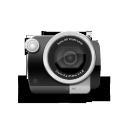Yahoo Answers is shutting down on May 4th, 2021 (Eastern Time) and beginning April 20th, 2021 (Eastern Time) the Yahoo Answers website will be in read-only mode. There will be no changes to other Yahoo properties or services, or your Yahoo account. You can find more information about the Yahoo Answers shutdown and how to download your data on this help page.
Trending News
Prime Lenses vs L Glass ?
Hi I own several Canon APS-C sensor camera (cropped, x1.6)
Primes seem to have excellent picture quality. And so does L glass.
What I would like to know is : how much is the difference?
What I am looking for is a cheap general purpose lens. I have used prime before (50mm,85mm)and
satisfied more than zooms. Is there any prime that is as good as L?
3 Answers
- 1 decade ago
You should tell us about the application you have in mind, and we can then tell you the lenses to look at.
Typically canons mid-range primes (the USM, fast aperture non-Ls) out-perform any of it's zooms, but then you have optics like the 70-200 f2.8L IS II which is pretty much an excellent all-rounder accross it's zoom range.
The resolution figures for the 85mm f1.8, 100mm f2, 100mm f2.8 Macro are all fall off your chair good.
The L equivalents are frequently a little better at comparable apertures, but they have the benefit of extra speed should you absolutely need it. The extra speed also a has a pay-off for AF speed as well.
The lens data for the 100 f2.8 macro and the L version aren't vastly different (both are excellent) but the L version has IS.
The 85 f1.2 is a beautiful lens, but you would really really have to need that extra stop to look past the brilliant 85mm f1.8.
When it comes to the 50's, the 50mm f1.2 is actually outperformed by the f1.4 at comparable apertures, so it becomes a question of, how much do you need that extra half stop? In actual fact, by the usable apertures from around f2.8 up, there isn't much of an arguement optically for spending more than the nifty fifty f1.8 version (the 1.4 has a fast quiet USM motor, has more circular bokeh, better built)
I have used primes and zooms, and have went more down the f2.8 zoom route, as I'm shooting more and more video with my DSLR and the f2.8 really can make a difference.
Heres another little secret... I had the 17-40 f4L, which was a great lens as an APS-C walkabout, opically the peer of the 16-35 f2.8 II, just a stop slower, but I sold it because the 18-55 IS version is, other than max aperture, just as good.
The non-L EF-s 17-55 f2.8 is actually the best lens for this range on an APS-C camera, but it costs nearly L money, and certainly isn't build like an L.
For some applications, such as product shot tilt shift or micro photography, your options are limited to non-L primes such as the 45 and 90mm TSE, and the 65 mpe. There is no eqivalent L, or equivalent lens made by third parties, so in these instances, the non-Ls are not just your best choice, but your only choice.
- keerokLv 71 decade ago
L-lenses are great because of that special glass element in it. Prime lenses are great mainly because of the laws of Physics. A prime L-lens would then be the best you could ever have if you are into Canon. You can have the best of both worlds. Confused? L is just a model classification. Prime and zoom are lens types.
- Anonymous1 decade ago
You should go with Canon EF 85mm f/1.8 USM Medium Telephoto Lens for Canon SLR Cameras
85mm standard lens with f/1.8 maximum aperture for Canon SLR cameras
Ring-type ultra-sonic monitor (USM) brings subject quickly into focus
Natural angle of view and perspective is ideal for portraits and natural images
Designed to produce beautiful background blur; weighs 15 ounces
Measures 3 inches in diameter and 2.8 inches long; 1-year warranty



